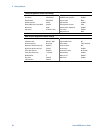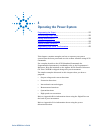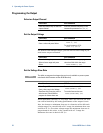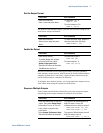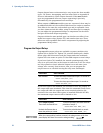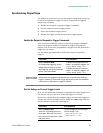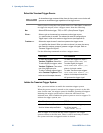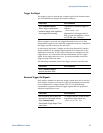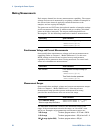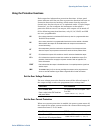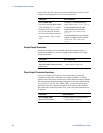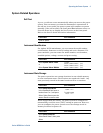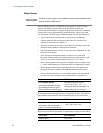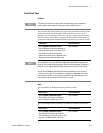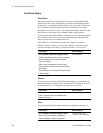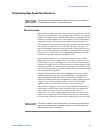
4 Operating the Power System
58 Series N6700 User’s Guide
Making Measurements
Each output channel has its own measurement capability. The output
voltage and current is measured by acquiring a number of samples at
the selected time interval, applying a window function to the
samples, and averaging the samples.
The power-on and *RST time interval and number of samples settings
yield a measurement time of 21 milliseconds per reading (1024 data
points at 20.48 μs intervals). The output windowing function is
Rectangular. Use the following commands to make a measurement:
Front Panel: SCPI Command:
Select the Meter key. To measure average voltage or current:
MEAS:VOLT?(@1:4)
MEAS:CURR?(@1:4)
Simultaneous Voltage and Current Measurements
Some models have simultaneous voltage and current measurement
capability (Refer to Chapter 1, “Model Differences”). In this case
BOTH voltage and current are acquired on any measurement,
regardless of the parameter that is being measured. To return both
values of a simultaneous measurement:
Front Panel: SCPI Command:
Not available.
First, measure the output voltage (or
current):
MEAS:VOLT?(@1:4)
Then Fetch the other parameter:
FETC:CURR?(@1:4)
Measurement Ranges
Some models have multiple voltage and current measurement ranges.
(Refer to Chapter 1, “Model Differences”). Selecting a lower
measurement range provides greater measurement accuracy,
provided the measurement does not exceed the range.
Front Panel: SCPI Command:
Select Measure\Range.
Select a range and press Select.
SENS:CURR:RANG 0.1, (@1)
SENS:VOLT:RANG 5, (@1)
The maximum measurable current is the maximum rating of the
range. If the measurement exceeds the range, an “Overload” error
will occur. Examples of programming measurement ranges are:
3.06 A range To select, program values > 0.1 A and ≤ 3.06 A.
0.10 A range To select, program values > 200 μA and ≤ 0.1 A.
200 μA range (option 2UA)
To select, program values ≤ 200 μA.



